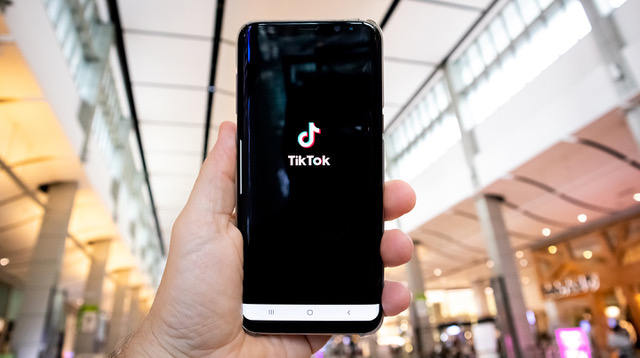There are plenty of over-used phrases in the world of marketing and brand strategy; think agile, purpose, why, end-to-end etc… But one that rarely gets a look in is ‘relevance’.

We measure it, talk about it, want to be it, worry about why someone has it more than us…
‘We need to be more relevant’
‘Our brand needs to remain relevant to…..’
‘Increasing our relevance is critical’
‘We need to focus on relevancy’
And it is a MASSIVELY important word.
It’s a word that is in 90%+ of the briefs we receive for both existing brands and new brands and it’s also a word we include within our own agency vision – ‘helping clients win the fight for relevance’.
But it is a word that can confuse. One that is easily slipped into a sentence but not often explained. To help demystify relevance, here we will look at the definition of relevance and also de-bunk five common myths about this important word.
So what does brand relevance mean? And why is relevance so relevant (excuse the pun!)
The dictionary definition of relevance: The noun form of the adjective ‘relevant’, which means related to what is being discussed or considered and therefore important.
At Brandon we translate that into: a brand that has a clear role in meeting (an identified) group of peoples’ needs today (and in the future).
Sounds quite simple. So where does the confusion happen?
The Top 5 ‘Relevance’ Myths:
Myth No. 1 – Relevance is all about appealing to younger consumers (millennials, Gen Z – whoever the youth at the time are)
The dreaded ‘M’ word – “We want to appeal to millennials.”
Disclaimer: Not to write off the desire to be youthful and target the ‘young’ as I completely understand this and it may be right for many brands, but it doesn’t necessarily translate to relevance.
It is important to have a core target audience in mind for the brand and/or a core occasion/need it is meeting.
A demographic profile or age is not critical and, if anything, is often not always the most meaningful versus an attitudinal profile.
“A relevant brand is one that speaks directly to its audience in a way that resonates. It understands who its consumer target is anddoesn’t try to be all things to everyone. It meets a need in their life in a way that works. It enhances their life or solves a problem for them.” Jo Marshall (Head of Insight & Innovation, Thornton & Ross)

Myth No. 2 – Relevance is about having a higher order purpose
There is a misconception that in order to be relevant you have to be solving or meeting a ‘higher order’ need that we have like self-esteem, the joy of connection or the desire to be a good world citizen. Often referred to now as ‘brand purpose’, which replaced the en vogue ‘brand stories’.
Again, this may be right for brands where there is a clear and credible link to these needs, and it is great to use the brand laddering technique to try and assess the emotional needs, but let’s also keep a check on reality…
It is about needs (both functional and emotional) but those needs must make sense for the brand and category.
“Relevance to me is a brand that can answer a particular need that ‘I/the family’ have at the moment.” Jon Thompson (Marketing Controller, Napolina)
Myth No. 3 – Relevance is another word for ‘staying on trend’ so changing to fit new trends is critical
A brand has to stay true to itself and so chasing every latest and greatest ‘ground-breaking’ trend will ultimately lead to running in circles and chasing your tail because for every trend, there is always a counter-trend.
Instead look to understand the evolving needs and desires of your target customer and how their lives are changing.
“It means keeping true to what is at the heart of your brand; what gives it its true essence. But how you communicate the brand message and what product or packaging format it is delivered in, needs to be relevant to your target customer’s evolving needs and wants.” Michelle Younger (Marketing Manager, Aimia Foods)
Myth No. 4 – Relevance is about being different to competitors
Relevance and differentiation are two different things. Many brands within a category can be relevant and may be trying to address similar needs, so they may try to be differentiated and/or distinctive in order to bring their relevance to life in a way that is different to competitors. Alternatively, they may use ‘relevance’ in some way to pull away from competitors by reframing the need people have or showing it in a different way.
Myth No. 5 – Relevance is about having a presence on cool social media channels – Tik Tok, Insta, etc…
Throw as much money as you like at social media but if the brand is not relevant to the target on that particular platform it may as well be wallpaper. Of course, talking about stuff that matters to people (aka content) will help but, in summary, the media channel used does not drive brand relevance.

So the million-dollar question – How to become more relevant?
There are multiple levers and tactics that we can use to drive relevance – from communications, design and innovation, but what is critical, in our humble view, is that:
- Success starts from a single-minded brand positioning with a core target market in mind.
- We should revisit this every once in a while (no more than annually) to see if it remains right or needs reframing given any big shifts in the world, culture, category or competitor changes. This reframe doesn’t need to be 360 degrees and it must be credible for the brand.
- Finally, it’s really important to discuss what this strategic reframing means for evolving our tactics – media choices, communication, packaging, innovation, etc… If there are no changes to tactics then can we really call it a refresh? It is possibly just words on a piece of paper pulled out for brand planning.
BY Louise Kennedy, Strategist at Brandon

You must be logged in to post a comment Login